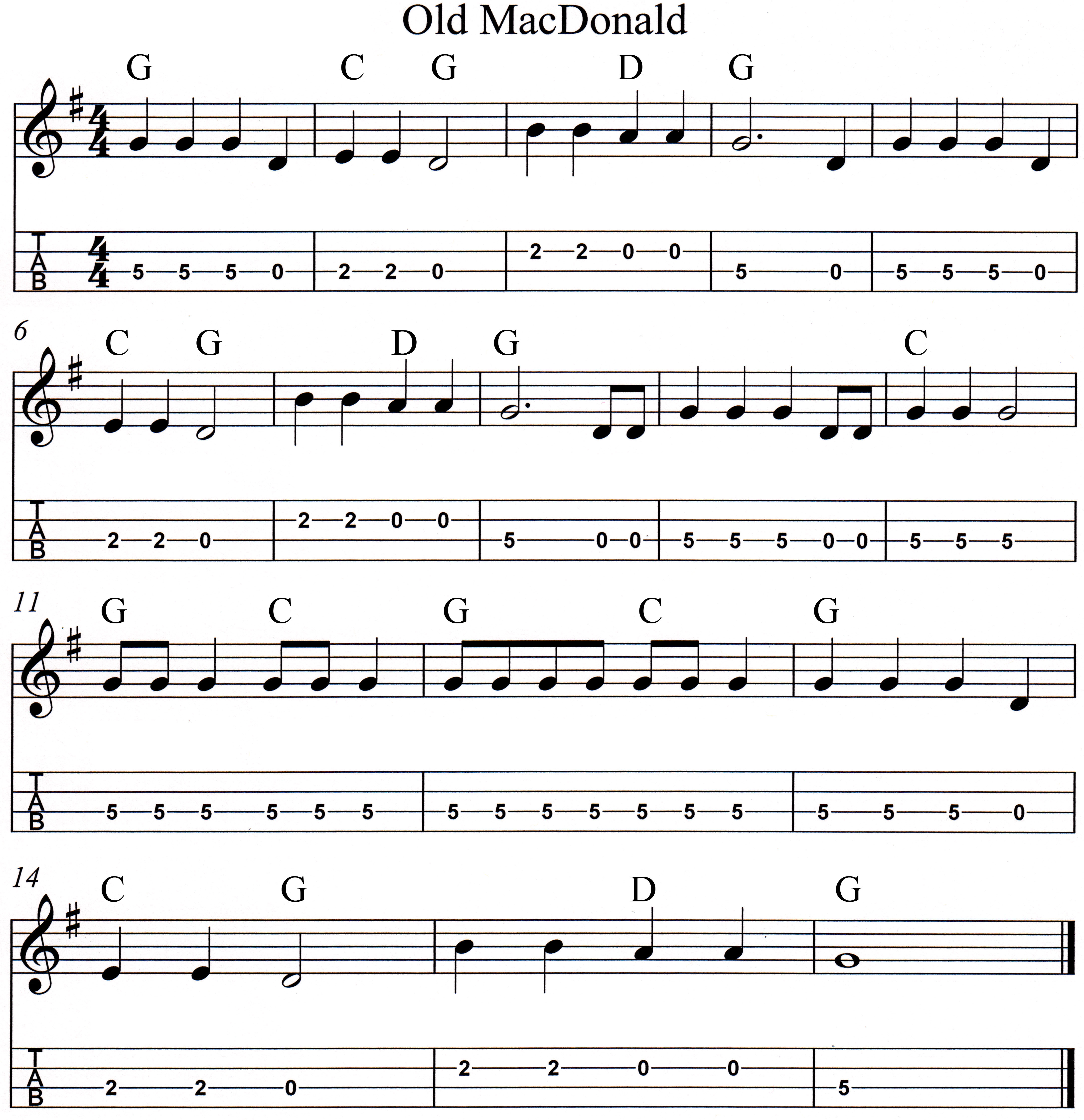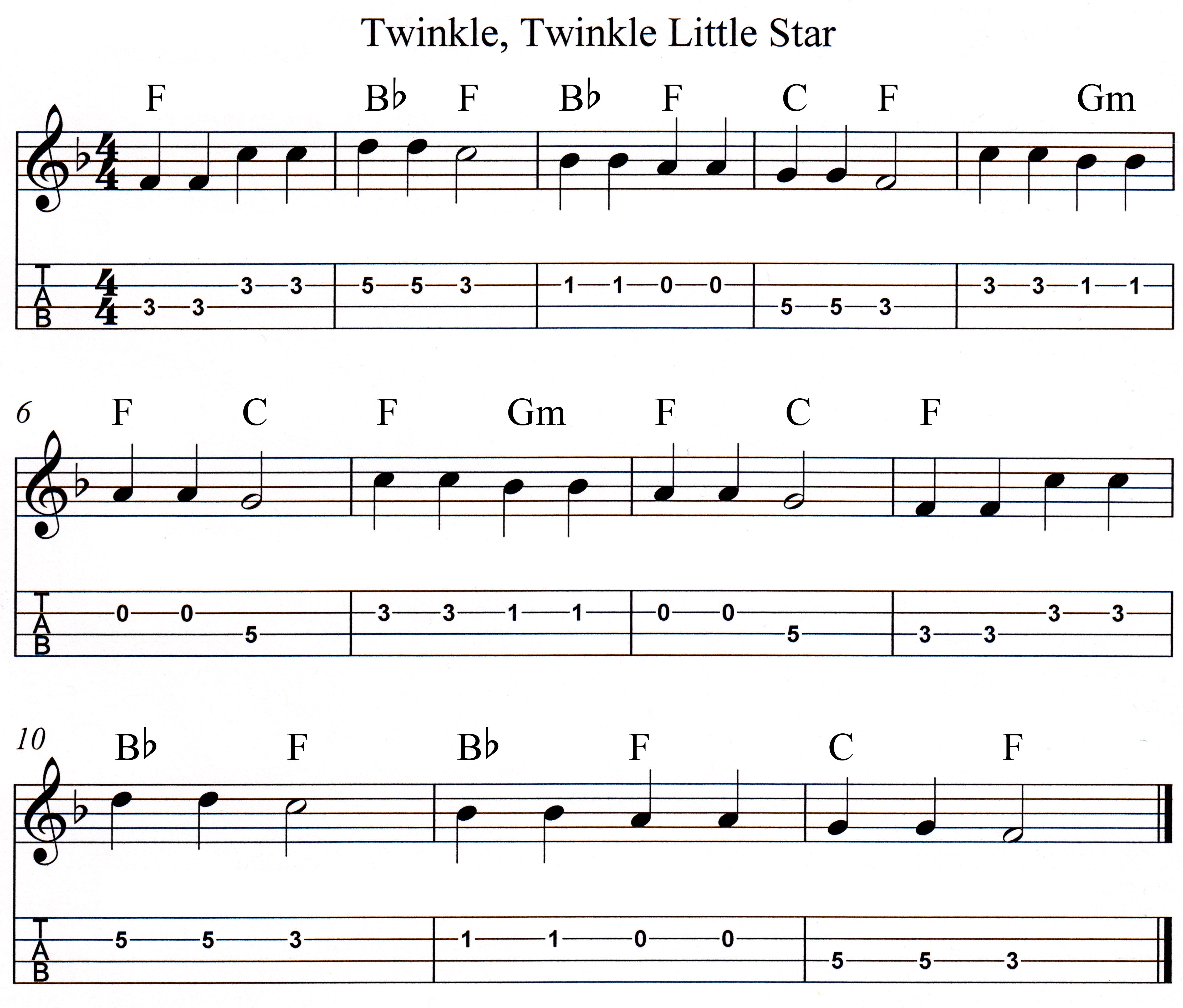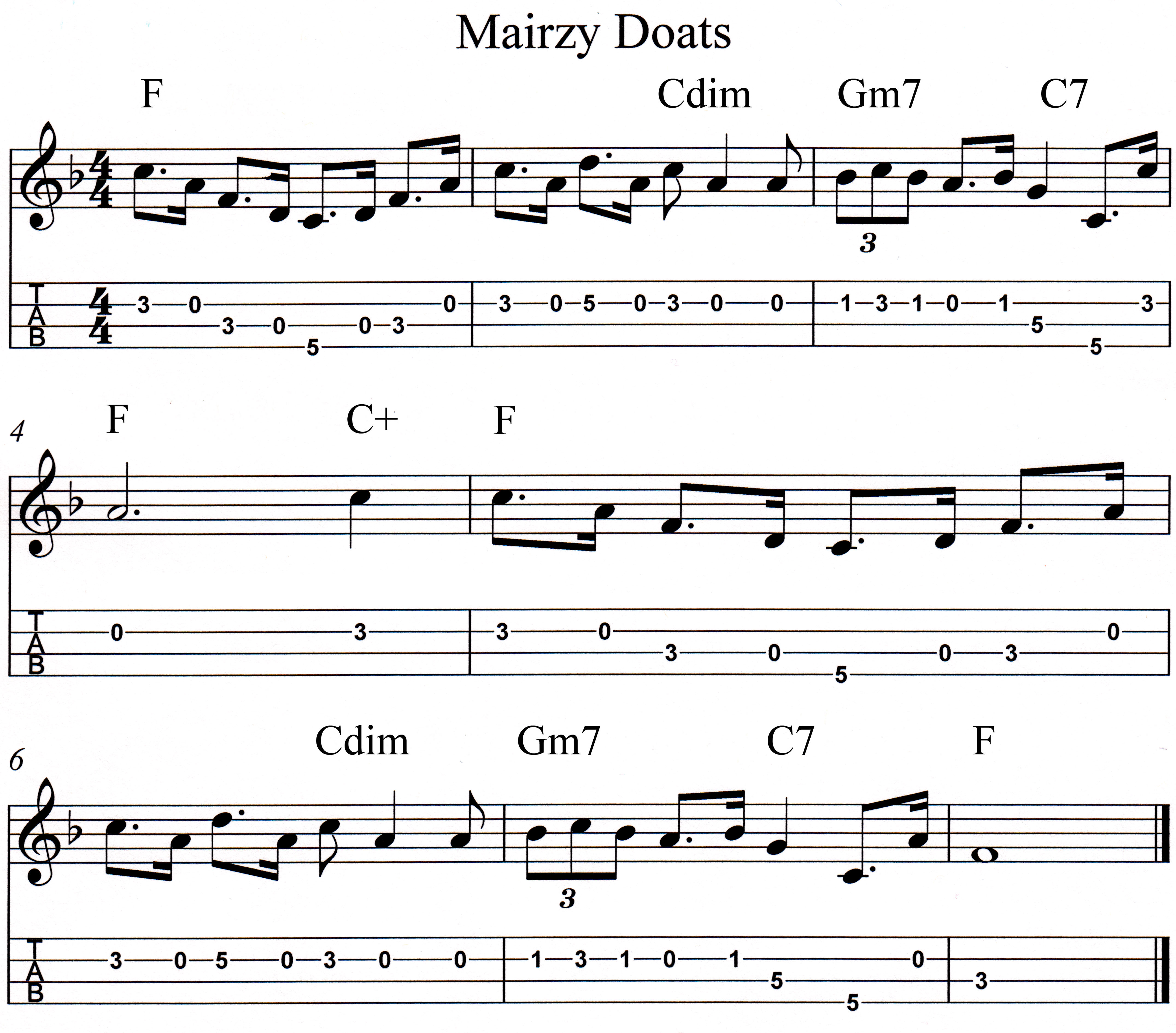
As promised, this time you'll be learning a few tunes to play, starting out with familiar ditties. The reason is that you know these songs, even if you don't "know" them. We all learned them as kids - at least in the
United States. They are easy and help you understand good playing technique. Chords are included so you can grab a guitar player and have them accompany you. Or have someone record the guitar parts for you to practice
over.
First up: Old MacDonald. Why a song like this? Well, you'll be using your first and third fingers to fret the notes, so very easy to play. As you play through this, be sure to focus on alternating your
picking, up and down, all the way through. This is a good habit to get into as it wastes less motion.

Once you're comfortable playing this tune reasonably smoothly, bring in a metronome at around 80 bpm to stabilize your playing to become more accurate to the beat and flow of the tune. Then you can speed it up all you want, but only at 4 bpm changes. And then, only increase the speed when you master each new tempo.
The next tune steps things up a bit: Twinkle, Twinkle Little Star. For this tune you'll be playing with your first, second and fourth fingers. If you have really long fingers, you can play with your third finger
in place of your fourth. However, I caution you about neglecting that fourth finger on your fretting hand! Don't avoid learning to play single note runs with it. Just use common sense.

Alright, now let's turn to something a little more involved, and maybe not quite so familiar: Mairzy Doats, an old classic silly little tune. But, before we dive in, some notation stuff needs to be explained so you can play this correctly.
The song has a swing feel; another way to say it is that it is a shuffle, which makes it kind of bouncy in nature and execution. What makes a shuffle work is the "halting" way in how you approach playing the notes. Let's break it down...
First, what a shuffle is, in essence, is a triplet feel. So you need to understand what that means. A triplet is basically playing three notes in one beat, smooth and even. And you count it: 1 an a; 2 an a; 3 an a; 4 an a.
So, then, what does it look like, how is it written out? In the following diagram, you see a triplet. Simply play three notes per beat, smooth and even, alternating down and up strokes with the pick. Use a metronome;
set it at about 50 - 60 beats per minute (bpm). And count out loud as you play, "ONE an a, TWO an a..." etc.

If you're having trouble playing the three notes per beat smoothly, here's a trick: Set the metronome to about 150 bpm (slower if you need to), and play one stroke per click, counting out loud to keep yourself grounded in the triplet feel: "ONE and a, TWO an a..." etc. What we're doing here is using the metronome to help you understand how to play triplets by sounding out each part of the triplet with a click.
Once you are comfortable with that, try setting the metronome back to 50 bpm and play three notes per click. Got it? Excellent, now you can move on...
Okay, now, what you want to do is eliminate the middle note of the triplet, but still count "1 an a...." as you play, striking the first and third note of the triplet, the beat (1, 2, 3, 4) note and the "a" note.
Notice, too, that you are now playing a down stroke on the beat note, and then an up stroke on the "a" note. This is where the "halting" feel comes in that we mentioned earlier. You hang at the bottom after the down
stroke - but only just, before the up stroke on the "a" of the beat. You'll get it!

And if you need to, push the metronome back up to 150 bpm to help you sound it out - just don't play the middle note of the triplet. The middle click will sound alone, without you playing a note.
The following diagram shows three ways you can write out a shuffle feel. Example a) is the literal, but not very good notation practice. Example b) is typical - and the one used in the following chart - but can also be a
bit tough for some folks. Example c) is the common practice in notating a shuffle, by employing a metric modulation. A metric modulation defines the way you play something, the technique you should employ.
When you see this particular metric modulation symbol, you simply play the the composition as if everything were notated to the triplet feel.

Yes, it can be a bit daunting. But once you get it, you'll never forget it!
If you think you have the technique down, you are ready to play the song. Here it is. You will mostly use your first and third fingers, the low C note on the fourth string probably should be played with your little finger,
though. It's just easier - and you should begin to learn to get all your fretting fingers engaged. You will need them!

A lot of what mandolin players do is grounded in single note stuff, playing fills in between verses, even sometimes harmonizing with the vocalist. So a firm grasp of melodic ideas and single note playing is essential to being a well rounded mandolin player, ready to tackle any challenge and contribute some sweet sounding accompaniment to any song in any style, not just Bluegrass and Country.
Now, start makin' some foot stompin' music!